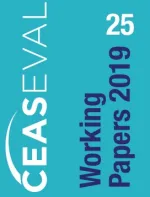Harmonising asylum systems in Europe – a means or an end per se?

CEASEVAL Working papers No.25
The Common European Asylum System was kick started with the 1999 Tampere Conclusions, which aimed at establishing a Common European Asylum System, based on the full and inclusive application of the Geneva Convention. In the longer term, so the vision, the system should lead to a common asylum procedure and a uniform asylum status valid throughout the Union. To achieve this aim, a set of minimum - and later, common - standards were adopted in form of EU Regulations and Directives, together referred to as the Common European Asylum System. The pure emphasis on legal harmonisation soon revealed its gaps. Practical cooperation through the establishment of the European Asylum Support Office (EASO) became the answer to achieve practical harmonisation. The EU institutions, regional courts and an increasing number of political, policy, academic and non-governmental networks have engaged as important actors and drivers of harmonisation at the European level. While each driver contributes in one or the other way to the harmonisation of the European and national asylum systems, it becomes apparent that the overall sight of the ultimate goal and purpose of harmonisation got lost along the way. Based on a number of stakeholder interviews and desk research, the paper assesses the various drivers of harmonisation and consequently explores whether harmonisation ultimately became an end per se instead of a means to reach a common vision backed by all – now 28 – EU Member States. The paper thus concludes that investing during the coming legislative periods in re-identifying the vision behind a Common European Asylum System would be preferable to harmonising systems for the sole sake of harmonisation.
Keywords: Harmonisation; Networks; Common European Asylum System; EASO